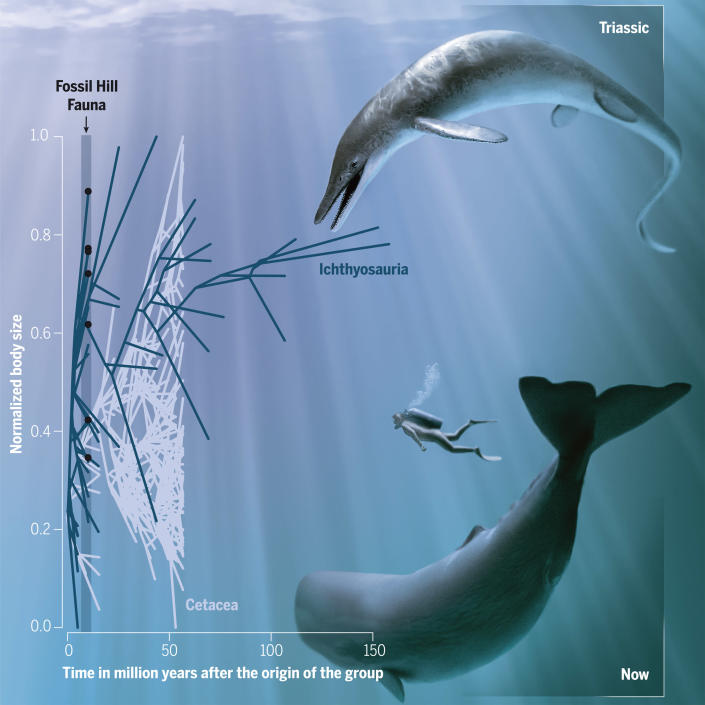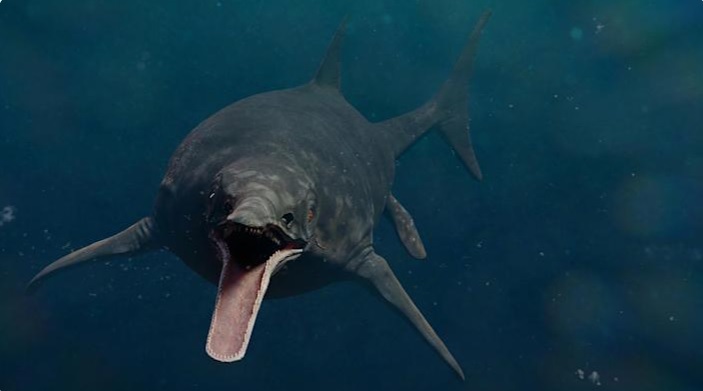According to a new study, scientists believe the largest animals to ever live, lived in the sea. In fact, a new discovery has led them to believe that one of the largest animals was a Triassic period predator that was somewhat similar to modern-day whales.
Based on the new discovery, researchers believe that a 244-million-year-old fossil would have rivaled current cetaceans. The animal in question, an ichthyosaur, existed 8 million years after the first ichthyosaurs, at the most. Because of its massive size compared to other ichthyosaurs, scientists believe its evolution was expedited in some way.
The new study, which was published in Science on December 24, focuses heavily on the discovery of the fossil in Fossil Hill, Nevada. It also focuses on how the creature that left the fossil behind could have grown as large as it did. Based on the discovery, scientists believe that the ichthyosaur that they found had a two-meter-long skull. They also believe that it was a completely new species of Cymbospondylus.
Researchers say that this is the largest known tetrapod of the Triassic period, on land or in the sea. It’s also the first in a series of massive ocean giants that would go on to rule the sea. They also believe that the creature was able to grow to the size it did as quickly as it did by eating ammonoids. These small, yet abundant prey, would have helped the ichthyosaur grow exponentially faster. Because of the time period, scientists feel the end-Permian mass extinction helped provide such an abundant source of ammonoids.
The discoveries they’ve found have also led scientists to believe that this Triassic period predator evolved much earlier than whales. Scientists currently consider whales to be the largest animals on Earth.
Diving deeper

There is still a lot that we don’t know about the evolution of marine animals. Scientists may be able to learn more from the discovery of this new ichthyosaur. Specifically, they may learn more about the evolutionary track that marine life followed. This particle Triassic period predator lived millions of years ago. However, its fossil could be a new door of understanding we haven’t previously been able to achieve. And, it might not be the only one out there.
In the study’s abstract and conclusions, the researchers noted that the environment of the time may have supported multiple creatures the same size. Additionally, the abundance of ammonoids could have helped fuel the exponential growth of the ichthyosaur shortly after its origins.
Read the original version of this article on BGR.com
Source: BGR.com
TYT Newsroom



